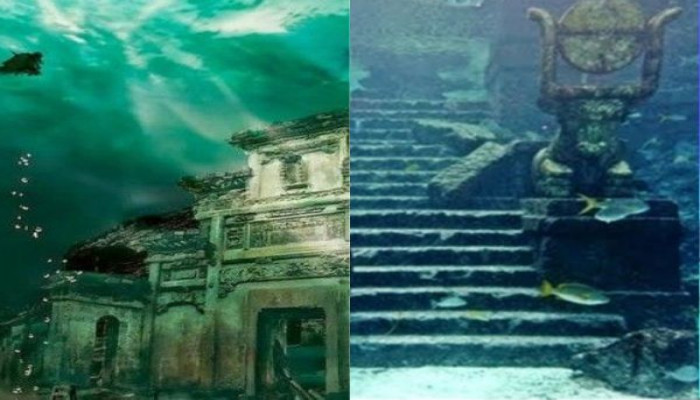ASI launches underwater exploration of 4,000 year old Dwarka
- In History & Culture
- 07:57 PM, Feb 20, 2025
- Myind Staff
The Archaeological Survey of India (ASI) has resumed its underwater exploration of Dwarka, an ancient submerged city off the Gujarat coast, believed to be Bhagwan Krishna’s karmabhoomi (land of action). This mission, initiated by the Underwater Archaeology Wing (UAW) of the ASI, aims to uncover the secrets of this 4,000-year-old planned city and preserve its underwater cultural heritage. This marks the first major exploration effort in two decades, following excavations conducted between 2005 and 2007.
A team of five archaeologists, led by Professor Alok Tripathi, Additional Director-General (Archaeology) at ASI, has begun an underwater survey off the coast of Dwarka. The research is focused on an area near Gomati Creek, with special attention on Bet Dwarka, an island close to Okha.
For the first time, this archaeological team includes a significant number of women researchers, such as Aparajita Sharma, Poonam Vind, and Rajkumari Barbina. Their efforts are expected to provide new insights into the ancient remains beneath the Arabian Sea.
The UAW has been a pioneer in marine archaeology since the 1980s, having previously conducted research at locations such as Lakshadweep’s Bangaram Island, Tamil Nadu’s Mahabalipuram, Manipur’s Loktak Lake and Elephanta Island off the Mumbai coast.
Dwarka is considered one of Hinduism’s seven sacred cities (Sapt Puris). According to legend, Bhagwan Krishna built this grand city after moving from Mathura to Gujarat. Ancient texts describe Dwarka’s impressive gates, tall buildings and urban planning. However, as per Itihasas, the city was submerged by the sea after Krishna’s departure, marking the beginning of Kali Yuga.
The archaeological connection between scriptures and reality has sparked debates among scholars. Some argue that the submerged structures might be natural formations, while others believe they align with Mahabharata-era descriptions.
During his visit to the Dwarkadhish Temple in February 2024, Prime Minister Narendra Modi highlighted the historical and spiritual significance of Dwarka. He even shared images of himself in scuba gear, exploring the underwater ruins, and stated, "I went deep into the sea and had 'Darshan' of the ancient Dwarka city. Archaeologists have extensively studied the submerged Dwarka. Our scriptures describe it as a city with magnificent gates and towering structures built by Bhagwan Krishna himself."
The search for Dwarka’s historical remains began in the 1930s with Hiranand Shastri’s research, followed by the first significant excavation in 1963, led by JM Nanavati and HD Sankalia. The 1983–1990 marine archaeological studies unearthed several stone anchors, fortified structures, pillars and irrigation channels, suggesting an ancient, well-planned city.
A study by the National Institute of Oceanography (NIO) in 2003 revealed that pottery, artefacts, and remnants of fortification walls from the Late Harappan to Medieval periods had been found in both Dwarka and Bet Dwarka. More recent discoveries included Medieval stone anchors, a lead anchor, and amphorae fragments from the early historic period, supporting the theory that Dwarka was a significant trade hub connecting India and West Asia.
Marine archaeologist SR Rao, who led major excavations, argued that the artefacts and structures found in Dwarka match descriptions from ancient texts, transforming myth into history. His research suggests that Dwarka was a city-state with smaller satellite towns, dating back to approximately 1500 BCE.
With this renewed underwater exploration, the ASI aims to uncover more evidence of the city’s existence and its historical significance. Archaeologists believe the findings will help bridge the gap between legend and reality, offering concrete insights into India’s ancient past.
As researchers dive deeper into the Arabian Sea, every new discovery brings the world closer to unravelling the mysteries of Krishna’s legendary city, making Dwarka an essential site in India’s historical and spiritual landscape.
Disclaimer: The opinions expressed within this article are the personal opinions of the author. MyIndMakers is not responsible for the accuracy, completeness, suitability, or validity of any information on this article. All information is provided on an as-is basis. The information, facts or opinions appearing in the article do not reflect the views of MyindMakers and it does not assume any responsibility or liability for the same.







Comments